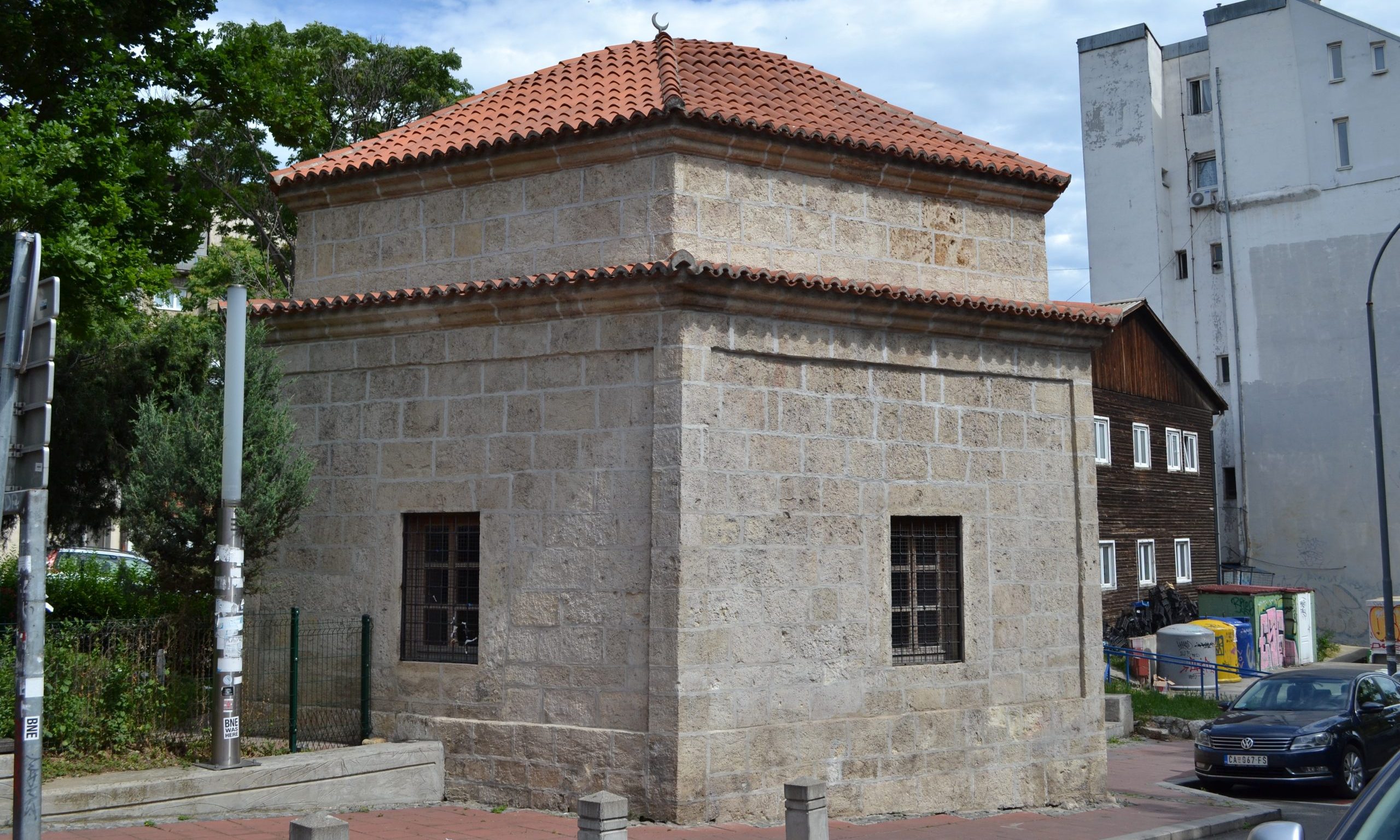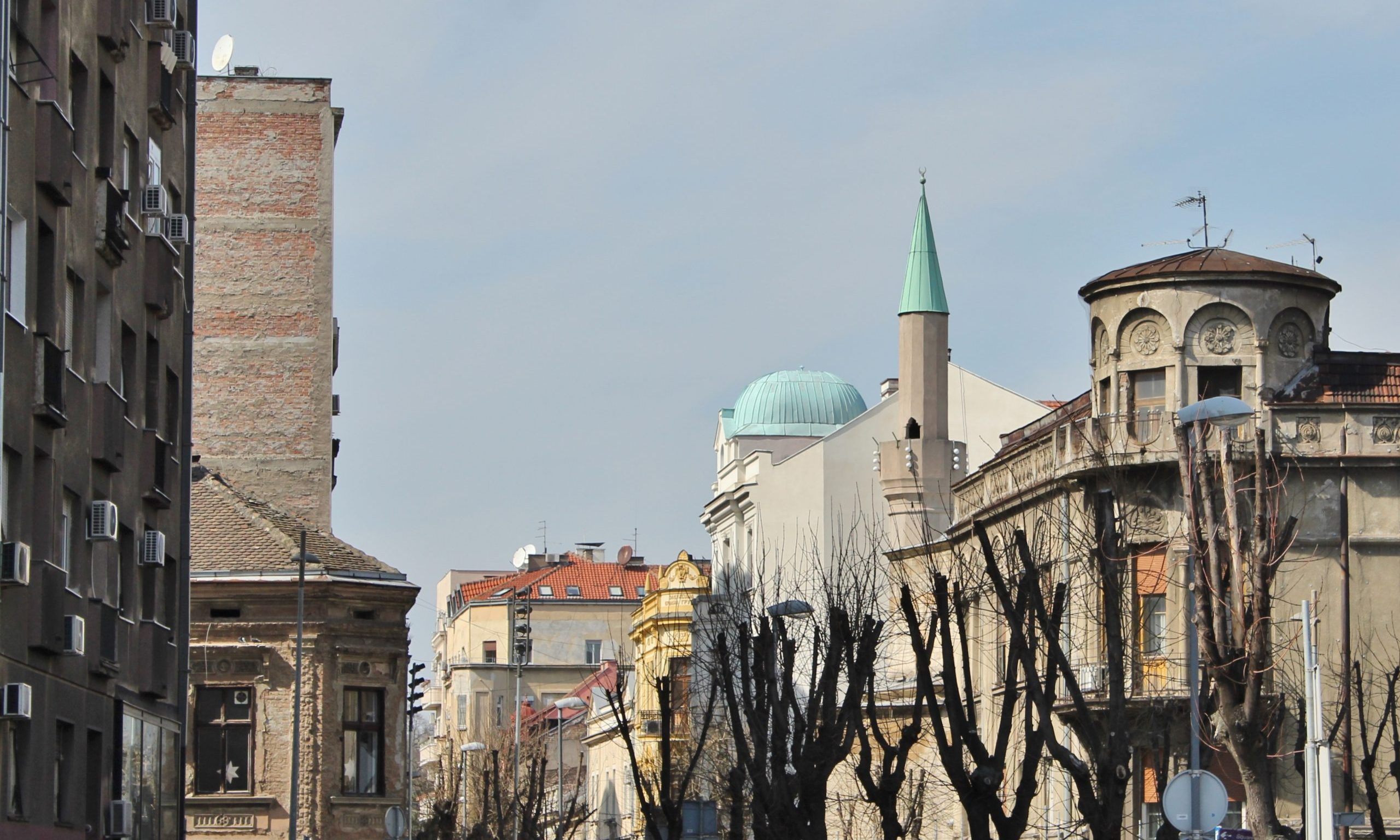Traces of oriental Belgrade are scarce in today's Belgrade. The symbols of that time are primarily buildings such as the Bajrakli mosque (built around 1575), the Kalemegdan fortress (formed over the centuries by various people, including the Ottomans), Turkish cobblestones (such as the one in the famous Skadarlija district), fountains (Mehmed Pasha Sokolović), turbeh (Damad Ali-Pasha turbeh and Sheikh Mustafa turbeh), and houses built in the Balkan-Ottoman style.

Šeik-Mustafino turbe

bajrakli-dzamija

Damad Ali pašino turbe
For almost a century, there has been interest in establishing the facts about several famous buildings from the Ottoman or short-lived Austrian period in Belgrade.
Bezistan and the caravanserai of Mehmed Pasha Sokolović
It was believed that the palace of the Austrian commander of Belgrade from the period 1717-1739. it is not a newly built building and that it actually represents an adapted caravanserai of Mehmed Pasha Sokolović, built between 1572 and 1578. It was concluded that the caravanserai was a very large building with a high bezistan, and it occupied a place in the large bazaar or on the main square of the Lower Bazaar, in the area now occupied by parts of the streets and the front of the block between Dušanova, Tadeuša Košćuška and Strahinjić Bana Street.
The Pirinckhan building
The building of the Turkish Pirinckhan is one of the buildings that has lasted the longest in the structure of Belgrade, so it is understandable that it attracted attention and that historians often researched it. It was determined that it was the Turkish pirinc khan, which was in the period of Austrian rule 1717-1739. used to house military pharmacies. After the return of the Turks to Belgrade in 1739, Pirinč Khan was bought by Aga Hajji Berish. Han then had 25 rooms and 5 mutvakas (kitchens) on the ground floor, 20 rooms upstairs and three basements. It was used as a warehouse, bazaar and inn, and in the war of 1789 it was seriously damaged. It is not even drawn on the city plans, but is marked only with house numbers, so it is not possible to say with certainty where exactly it was, but it is known that its ruins have long stood as a symbol of the former Turkish power of late feudal Belgrade.
Commander's apartment or governor's palace
The commander's palace or more precisely the apartment of the commander and governor of Serbia during the period of Austrian rule 1717-1739. It was located on the Danube slope near Pirinčana, then the Military Pharmacy, in the opposite block on the right side of today's Dušanova Street. The so-called commander's or governor's palace was actually a court complex composed of several buildings. It was drawn and marked on almost all Austrian plans between 1720 and 1740, so we can find out that it was located on the site of today's blocks between Dušanova, Riga od Fere, Gospodar Jovanova streets and 7 July. After the return of the Turks, he bought the palace with auxiliary buildings and the entire property from the state of Yahya Pasha and used it for his numerous endowments. The people of Belgrade called the former commander's palace the Old Aga Gate. In the last Austro-Turkish war, like many buildings on Dorcol, the barn was badly damaged and it is assumed that it was never rebuilt.
Austrian Maurer Barracks and Turkish Spahija Barracks
The Maurer barracks, that is, the masonry or engineering barracks, was one of the relatively small number of newly erected buildings in the city of Belgrade during the Austrian rule in 1717 and 1739. It is known that it was built in 1727 to accommodate the engineering units that performed works on the fortress and the outer town fortifications. It is drawn in most of the plans of Belgrade from that time, so according to more accurate plans, its position can be easily determined. The barracks was built on the empty space of the former Musala, the Turkish central cemetery, exactly on the site of today's building block between Uzun Mirkova and Kralja Petra streets. According to the provisions of the Peace of Belgrade, the barracks were to be demolished before the definitive takeover of Belgrade by the Turks in 1740.
During the second conquest of Belgrade at the end of the 18th century, the Austrians found the Turkish Spahija barracks on the site of the Maurer barracks. The further fate of the Spahija barracks after the return of the Turks to Belgrade in 1791 until the end of the First Serbian Uprising is uncertain and there are no reliable documents to monitor the further use of the building. There is only the need to clarify some other important issues, first of all whether the barracks can be identified with the Delijski konak where Karadjordj stayed.
Deli's lodgings
Deli's lodgings occupy a special place in the literature and sources on the occasion of the fortification of Karadjordje's apartment in insurgent Belgrade. As previously stated, it can be linked to the Spahija barracks, but various writers and sources speak vaguely about its actual location and that its position probably changed over time. As far as I can conclude, at least three buildings in sources and literature were called Delijski konak in the 19th century, in Uzun Mirkova Street, the second on the site of today's exhibition pavilion on the corner of Delijska and Vuk Karadzic Street and the third on the site of today's building no. 7 in Vuka Karadžića Street.
Written by: Nadja Veli and Alisa Šarac
